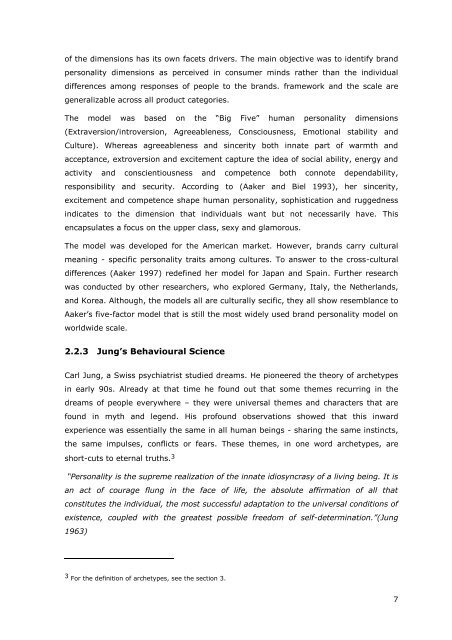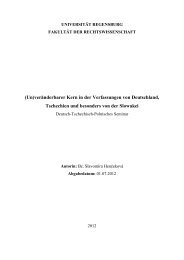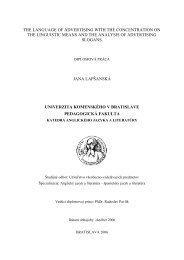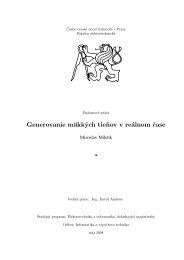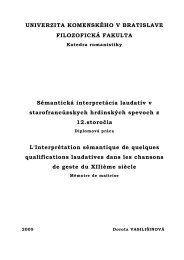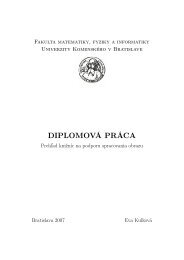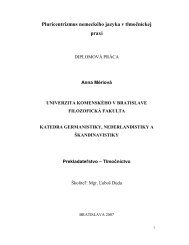Designing Brand Personality Using the Power of Archetypes ...
Designing Brand Personality Using the Power of Archetypes ...
Designing Brand Personality Using the Power of Archetypes ...
You also want an ePaper? Increase the reach of your titles
YUMPU automatically turns print PDFs into web optimized ePapers that Google loves.
<strong>of</strong> <strong>the</strong> dimensions has its own facets drivers. The main objective was to identify brand<br />
personality dimensions as perceived in consumer minds ra<strong>the</strong>r than <strong>the</strong> individual<br />
differences among responses <strong>of</strong> people to <strong>the</strong> brands. framework and <strong>the</strong> scale are<br />
generalizable across all product categories.<br />
The model was based on <strong>the</strong> “Big Five” human personality dimensions<br />
(Extraversion/introversion, Agreeableness, Consciousness, Emotional stability and<br />
Culture). Whereas agreeableness and sincerity both innate part <strong>of</strong> warmth and<br />
acceptance, extroversion and excitement capture <strong>the</strong> idea <strong>of</strong> social ability, energy and<br />
activity and conscientiousness and competence both connote dependability,<br />
responsibility and security. According to (Aaker and Biel 1993), her sincerity,<br />
excitement and competence shape human personality, sophistication and ruggedness<br />
indicates to <strong>the</strong> dimension that individuals want but not necessarily have. This<br />
encapsulates a focus on <strong>the</strong> upper class, sexy and glamorous.<br />
The model was developed for <strong>the</strong> American market. However, brands carry cultural<br />
meaning - specific personality traits among cultures. To answer to <strong>the</strong> cross-cultural<br />
differences (Aaker 1997) redefined her model for Japan and Spain. Fur<strong>the</strong>r research<br />
was conducted by o<strong>the</strong>r researchers, who explored Germany, Italy, <strong>the</strong> Ne<strong>the</strong>rlands,<br />
and Korea. Although, <strong>the</strong> models all are culturally secific, <strong>the</strong>y all show resemblance to<br />
Aaker‟s five-factor model that is still <strong>the</strong> most widely used brand personality model on<br />
worldwide scale.<br />
2.2.3 Jung’s Behavioural Science<br />
Carl Jung, a Swiss psychiatrist studied dreams. He pioneered <strong>the</strong> <strong>the</strong>ory <strong>of</strong> archetypes<br />
in early 90s. Already at that time he found out that some <strong>the</strong>mes recurring in <strong>the</strong><br />
dreams <strong>of</strong> people everywhere – <strong>the</strong>y were universal <strong>the</strong>mes and characters that are<br />
found in myth and legend. His pr<strong>of</strong>ound observations showed that this inward<br />
experience was essentially <strong>the</strong> same in all human beings - sharing <strong>the</strong> same instincts,<br />
<strong>the</strong> same impulses, conflicts or fears. These <strong>the</strong>mes, in one word archetypes, are<br />
short-cuts to eternal truths. 3<br />
“<strong>Personality</strong> is <strong>the</strong> supreme realization <strong>of</strong> <strong>the</strong> innate idiosyncrasy <strong>of</strong> a living being. It is<br />
an act <strong>of</strong> courage flung in <strong>the</strong> face <strong>of</strong> life, <strong>the</strong> absolute affirmation <strong>of</strong> all that<br />
constitutes <strong>the</strong> individual, <strong>the</strong> most successful adaptation to <strong>the</strong> universal conditions <strong>of</strong><br />
existence, coupled with <strong>the</strong> greatest possible freedom <strong>of</strong> self-determination.”(Jung<br />
1963)<br />
3 For <strong>the</strong> definition <strong>of</strong> archetypes, see <strong>the</strong> section 3.<br />
7


